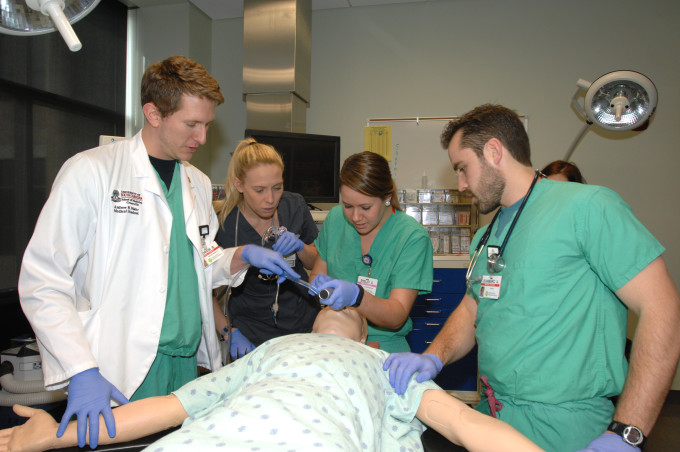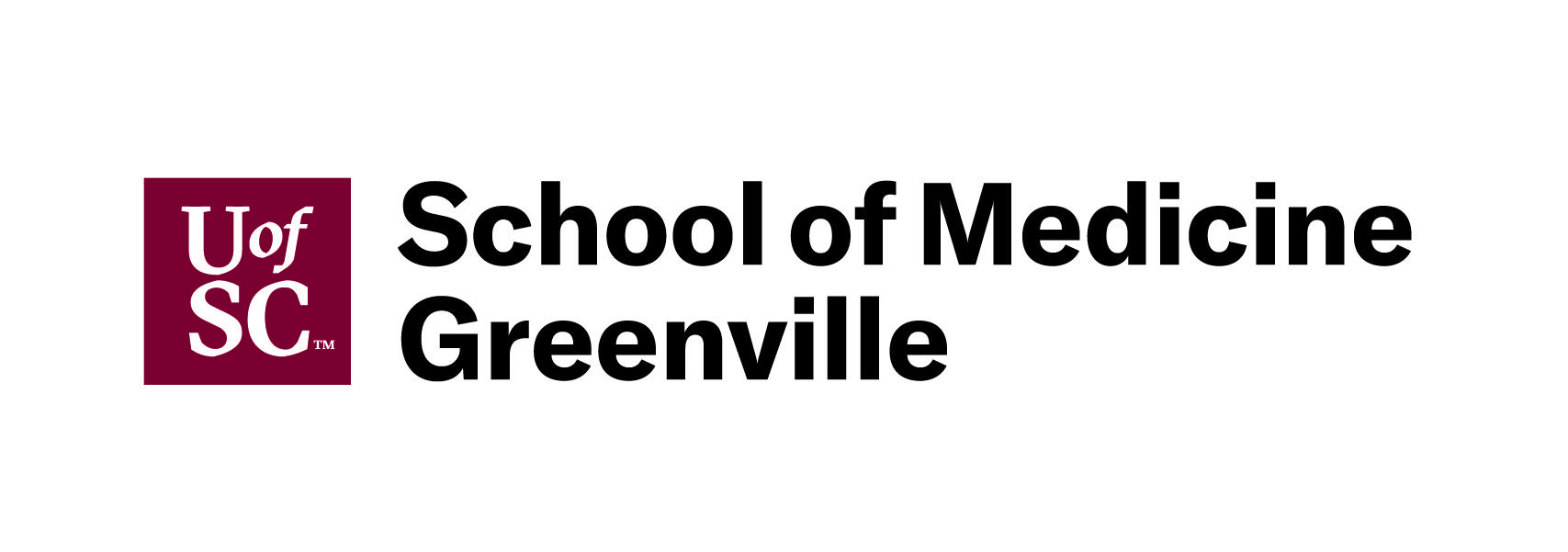
Get the latest articles delivered directly to your inbox!
Our Contributors
Class of 2022
Kyle Duke
Austin Foster
Charlotte Leblang
Ross Lordo
Class of 2021
Dory Askins
Connor Brunson
Keiko Cooley
Mason Jackson
Class of 2020
Megan Angermayer
Carrie Bailes
Leanne Brechtel
Hope Conrad
Alexis del Vecchio
Brantley Dick
Scott Farley
Irina Geiculescu
Alex Hartman
Zegilor Laney
Julia Moss
Josh Schammel
Raychel Simpson
Teodora Stoikov
Anna Tarasidis
Class of 2019
Michael Alexander
Caitlin Li
Ben Snyder
Class of 2018
Alyssa Adkins
Tee Griscom
Stephen Hudson
Eleasa Hulon
Hannah Kline
Andrew Lee
Noah Smith
Crystal Sosa
Jeremiah White
Jessica Williams
Class of 2017
Carly Atwood
Laura Cook
Ben DeMarco
Rachel Nelson
Megan Epperson
Rachel Heidt
Tori Seigler
Class of 2016
Shea Ray
Matt Eisenstat
Eric Fulmer
Geevan George
Maglin Halsey
Jennifer Reinovsky
Kyle Townsend
Join USCSOMG students on their journeys to becoming exceptional physician leaders.

Emergency Medicine at USCSOMG and GHS: Part 3
Here we go with the third and final part of M4 Maglin Halsey’s series on the new Emergency Medicine residency and interview with Dr. Camiron Pfennig. Here’s Part 1 and Part 2, in case you missed it.
M: Any advice for people applying to EM, here and other places?
DP: …Similar to the charter class here. You all came in and took that risk. You knew there would be some bumps in the road, and you get that self-selected group of students that just shine. I’m hoping that we’re as blessed to have that self-selected group of residents that wants to blaze a trail. They won’t be ranking this program No. 1 because it’s a 1970s, established program…I mean you look around, we don’t have anything on the walls. We’re going to establish our brand. They’re going to be the leaders, and we’re going to leave here and say, “I did that,” “I started that,” or “I fixed that.”
I think Emergency Medicine is one of those really exciting fields that is continuously changing, so the person that is applying to Emergency Medicine is the open-minded, go-getter, adventure-seeking personality. They don’t want it to be black and white; they’re ok with the gray, and I think that goes to say the same for our program. There are things that are black and white. You will see sick people. You will see hurt people. You will see kids. You will see adults. Everything in the middle is evolving, and we need the applicant here that’s willing to jump through some hoops but also willing to go outside the hoop—be creative and open to development, be open to change and really want to stand up for what the profession means. And that’s similar to the GHS goals.
We’re going to really work with this community that we serve and get out there and really show them that we are the Emergency Department of the Upstate, and we want the patients to have good experiences that they go and not only receive great care but also walk out and say…“I would want [them] to care for other members of my family as well.” So we want people that fit into that model.
I think the best thing to do right now, if you’re interested in Emergency Medicine, is to realize that commitment matters, and I don’t just mean commitment to medicine. We want to see people that are committed to continuing their life balance—if you’re committed to your church, you’re committed to a sport, you’re committed to volunteering, and you’re committed to your family. I really like to see the applicant that comes in and shows me, “Yes, I’m going to come in and give you three years of my life committed to you.” What have you done in your past that shows that you’ve been committed? What can I take from your application that you’ve done already that shows that I can expect this type of behavior from you in the future? I want well-rounded people. I want people to continue their hobbies.
I want you to have interest in going outside of your comfort zone—whether or not your comfort zone means, “I went to Asheville for the weekend” or “I went to an underserved country.” It doesn’t mean you have to go and spend your money to do something elaborate, but that you’re willing to branch out from your comfort area. That’s important.
I want someone that’s been successful in medical school, and success to me is not only your Step 1 score. Success to me is the whole package. Step 1 matters—I can’t change the world. Step 1 matters in context of everything else. I think that’s something that I hope will be different than some of the other very established programs that have established a Step 1 cutoff score. We want somebody that we know will pass the boards and perform well academically, but I would rather have a candidate who has contributed to their community or a candidate that has done well and contributed to their medical school in a leadership role, in a student government role, in a student interest group role, or in planting the garden*. If we have a tragedy in the residency, [I want] someone who’s going to step up and work that shift, someone who I know you can really count on to carry the torch if it needs to be carried. To me a 212 versus a 230 [on Step 1] doesn’t give me any of that information. It’s more the “everything else.” Letters of recommendation are huge. What did other people say about you in your rotations? What kind of a team player are you? How did you function under pressure? I think that’s extremely important. I want you to have done well in your clerkships. I mean clerkships, once again there’s a standardized test and it matters because it means you’ve dedicated some time to really study, but how did your patients respect you? How did your attending respect you in the OR or on peds, in the ortho clinic or on Family Medicine? I mean everything kind of goes together in a whole package. I hope that we continue that mission that I will look at them as a whole package. I will look at everything that comes in the ERAS application.
I recommend right now…the best thing you can do to write your personal statement is to take out your 3×5 index cards and every time you think of something, whether or not it be on a long car ride, a dinner with your friend, a— I don’t care— jot it down. Put it in a box, put it in a drawer, and when it comes time to write your personal statement it builds who you are, as opposed to trying to sit down with a pen. You’re going to get writers block…Things like that you can do now.
Getting or staying involved in an interest group—more than just going to a lunch-and-learn—reaching out to where there may be other opportunities such as volunteering in the community or in the EMS community. Stay in tune and intact on your EMS shifts. Embrace that fact that you’ve had the chance to become a certified EMT already. That’s unlike any other medical student can walk out of the medical school and say they’ve gotten to do. If it seems like it’s kind of a nuisance at this point, don’t let it be. Go and take every minute that you can out of your shift to make you a better emergency provider.
*Students, faculty, and staff at USCSOMG have worked together to plant a community garden outside the school. Check out this previous blog post about it! https://transformingmedschool.com/2013/12/05/students-organic-garden/
—————————
I want to say a big thank you to Dr. Pfennig for taking the time to sit down with me for this interview! The enthusiasm surrounding this new Emergency Medicine program is very clear in talking with the faculty and staff involved, and I’m excited I’ve been around to see its beginnings.
For other students interested in Emergency Medicine, if you would like to get more involved in some EM organizations, I have included a few resources below. Personally, I joined EMRA and ACEP as a fourth-year medical student, and those resources have been amazing!
Visit http://www.emra.org/join/ to join EMRA. For medical students, joining costs $55 and you will get access to some of EMRA’s best resources, including the podcast EMRAP and the EMRA Antibiotic Guide (two of my favorites).
SAEM also has a lot of resources, including information about the different Emergency Medicine programs around the country (http://www.saem.org/membership/services/residency-directory).
I’m originally from Knoxville, TN, and found my way to South Carolina four years ago to pursue my undergraduate education at Clemson University. I graduated in May 2012 with a degree in Bioengineering, and I’m thrilled to be spending four more years in this area. I am passionate about USC School of Medicine Greenville’s commitment to community wellness and developing well-rounded doctors. I am excited to share this journey of our charter class with you.
Transforming Medical School Blog
Copyright 2021 USC School of Medicine Greenville


